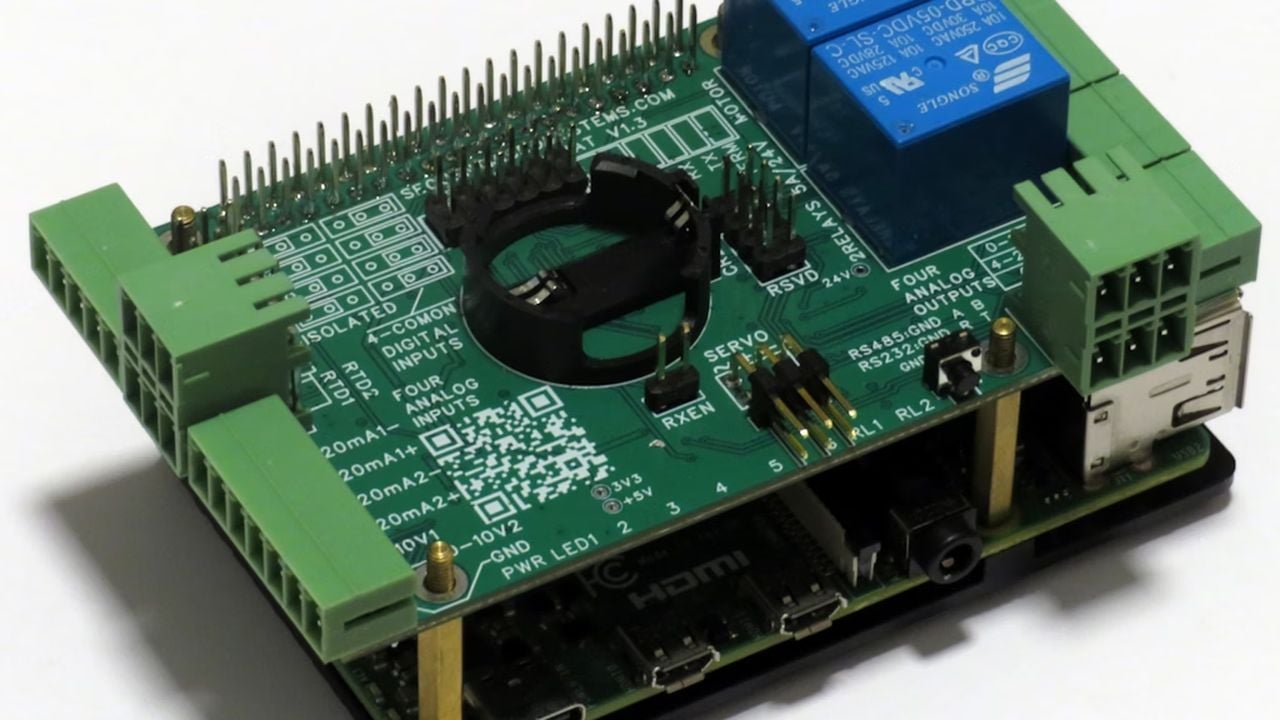Anyone creating autonomous systems using the Raspberry Pi range of mini PCs might be interested in the new Multi-iO HAT specifically designed for Raspberry Pi automation. Compatible with all Raspberry Pi versions, from Raspberry Pi Zero to Raspberry Pi 5. This compatibility is achieved through the use of the I2C port, demonstrating the device’s adaptability and interoperability.
The Multi-iO HAT’s compatibility with all Raspberry Pi versions ensures that it can be integrated seamlessly into a variety of setups, offering a high degree of flexibility for users. Exclusive early bird pledges are now available for the interesting project from roughly $70 or £58 (depending on current exchange rates).
Raspberry Pi HAT
In terms of functionality, the Multi-iO HAT is equipped with multiple digital and analog inputs and outputs. This includes two opto-isolated or four common ground digital inputs, two 0-10V and two 4-20mA analog inputs and outputs. The device also features two 3-wire RTD ports with 24 bit delta-sigma A/D converters, enabling accurate RTD measurement. This multitude of inputs and outputs allows the Multi-iO HAT to handle a wide range of tasks, making it a versatile tool in the field of automation.
Moreover, the HAT comes with two 5A/24V relays with normal-open contacts and status LEDs. These relays enhance the device’s capabilities, allowing it to control various electrical circuits. The device also includes a H-Bridge PWM micro-motor driver and two servo control ports, further augmenting its function in automation processes.
Industrial Automation
The Multi-iO HAT stands out with its expandability to eight layers. This feature allows users to increase the IO capabilities of the device, making it suitable for more complex tasks. Up to eight Multi-iO HATs can be stacked on top of each Raspberry Pi, demonstrating the device’s scalability.
If the Multi-iO HAT crowd funding campaign successfully raises its required pledge goal and the project completion progresses smoothly, worldwide shipping is expected to take place sometime around January 2024. Other articles we have written that you may find of interest on the subject of Raspberry Pi 5 the latest mini PC to be added to the range.
Specifications and features
- Uses only I2C port, works with all Raspberry Pi versions from Zero to 5
- Wide range 10-30V power supply provides also 5V/3A to Raspberry Pi
- Two opto-isolated or four common ground digital inputs
- Two 3-wire RTD ports with 24 bit delta-sigma A/D converters
- Two 0-10V Analog Inputs
- Two 4-20mA Analog Inputs
- Two 0-10V Analog Outputs
- Two 4-20mA Analog Outputs
- Two 5A/24V relays with normal-open contacts and status LEDs
- Two communication ports: RS485/Modbus and RS232
- H-Bridge PWM micro-motor driver
- Two servo control ports
- Nine Status LEDs (six general purpose)
- On-board push-button
- Real Time Clock with battery backup (battery not included)
- Hardware Watchdog
- Pluggable Connectors
- Stand-alone operation (No Raspberry Pi) using RS485/MODBUS
- Eight layer stackable for IO expansion
- Command Line Driver, Python Library, Node-Red nodes
Digital and analog inputs and outputs
The device is powered by a 10-30V power supply, which also provides 5V/3A to the Raspberry Pi. This wide range power supply ensures that the MULTI-IO HAT can function efficiently in various settings. It also includes nine status LEDs, an on-board push-button, a Real Time Clock with battery backup, and a hardware watchdog. These features enhance the user experience, providing real-time status updates and ensuring the device’s reliability.
Communication is a crucial aspect of automation, and the Multi-iO HAT does not disappoint in this regard. It comes with two communication ports, RS485/Modbus and RS232. These ports facilitate communication between the device and other components in an automation system. Moreover, the MULTI-IO HAT can operate stand-alone, without a Raspberry Pi, using RS485/MODBUS.
The Raspberry Pi automation HAT also comes with a Command Line Driver, Python Library, and Node-Red nodes. These features make the device more accessible and easier to use, allowing users to control and manipulate the device using various programming languages.
The HAT offers users a robust and versatile device that is essential in modern industrial and home automation. Its compatibility with all Raspberry Pi versions, multiple digital and analog inputs and outputs, RTD measurement and relay capabilities, and expandability to eight layers make it a standout choice in the field of automation. Whether used with a Raspberry Pi or in stand-alone mode, the Raspberry Pi automation HAT offers a range of solutions for autonomous tasks, making it a valuable tool for professionals and hobbyists alike.
For a complete list of all available pledge options, stretch goals, extra media and technical attributes for the Raspberry Pi automation system, jump over to the official Multi-iO HAT crowd funding campaign page by navigating to the link below.
Source : Kickstarter
Disclaimer: Participating in Kickstarter campaigns involves inherent risks. While many projects successfully meet their goals, others may fail to deliver due to numerous challenges. Always conduct thorough research and exercise caution when pledging your hard-earned money.
Filed Under: Hardware, Top News
Latest aboutworldnews Deals
Disclosure: Some of our articles include affiliate links. If you buy something through one of these links, aboutworldnews may earn an affiliate commission. Learn about our Disclosure Policy.







